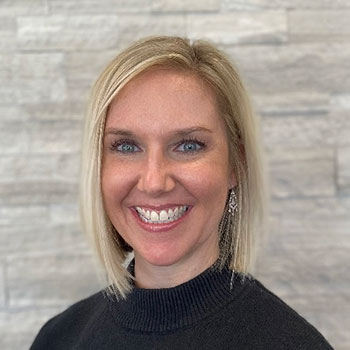Most parents believe that because their child can see things in the distance, both eyes must be functioning properly. Unfortunately, this is not always the case. They could be only using one of their good eyes and ignoring the image from the other.
One of these toughest things is knowing whether your child is having vision problems or not. Most kids won’t even complain because to them everyone sees the same way they do. This is why annual eye exams are so important for kids. It can catch issues like lazy eye early.
Many children with lazy eye don’t receive appropriate early treatment simply because their parents don’t know about the most recent treatment options. You might even be at the point where you’re wondering if you’ve waited too long to seek help for your child’s lazy eye.
If you are one of these parents, don’t panic, you’re in the right place.
What Is Lazy Eye?
Amblyopia, also known as a lazy eye, is a common condition that usually manifests itself in children between the ages of 6 and 9. It affects approximately 2-4% of children under the age of 6 and happens when one eye’s vision is weaker than the other.
In lazy eye, the brain starts to prefer one eye over the other, resulting in blurred vision in the affected eye. In this case, each eye receives its own image that doesn’t align with the other, and to cope, the brain shuts down and suppresses the image from the weaker eye.
As the brain relies on information from the unaffected eye, the other’s vision gradually deteriorates. This will also lead to poor depth perception, which requires both eyes to work properly together.
Strabismus is the most obvious form of lazy eye because one eye wanders outwards or inwards, but many cases of lazy eye are hard to detect without an eye exam. Early signs of amblyopia in children include:
- Tilting their head to see
- Disinterest or difficulty reading or writing
- Having trouble with depth perception
- Squinting or shutting one eye
It’s important to schedule a comprehensive eye exam with our optometrist, who can diagnose and treat patients of all ages.
What is Amblyopia?
Amblyopia is the medical term for what’s commonly known as lazy eye. While “lazy eye” is the more familiar name, amblyopia is the clinical diagnosis used by eye care professionals. It refers to the same condition: reduced vision in one eye due to the brain favoring the other.
What Is Strabismus? Is It the Same as Lazy Eye?
Strabismus and lazy eye (amblyopia) are often confused, but they’re actually two different conditions. Strabismus refers to a misalignment of the eyes, where one eye may turn in, out, up, or down, while amblyopia is reduced vision in one eye because the brain favors the other. Strabismus can lead to amblyopia if the brain starts ignoring the misaligned eye, but not all cases of lazy eye are caused by strabismus.
What Causes Lazy Eye?
Lazy eye is typically a result of one eye not developing normal vision during childhood, resulting in reduced vision in the affected eye. This can be caused by multiple factors, including:
- Refractive errors: one eye experiences significant vision differences compared to the other eye. For example, one eye is farsighted, and one eye is nearsighted. Typically, the brain will rely more heavily on the image from one eye over the other, causing the latter eye to become lazy.
- Muscle imbalance (Strabismus): caused by an imbalance in the muscles that control the positioning of the eyes, causing one (or both) eyes to turn inward or outward, and preventing them from working together.
- Family history
- Medical conditions
Is It Ever Too Late to Treat Lazy Eye?
Treatment for lazy eye should begin as soon as possible, ideally before the age of 7. It’s usually more effective to treat this condition before this age, but it’s never too late to treat lazy eye.
There is a widespread belief that a lazy eye can only be treated until the age of 8. It’s unfortunate that people who are older than that are denied access to effective treatment because of this misconception, which has been researched and proven to be false.
Treatment may take longer in a teenager or adult than in a child, but people over the age of 8 can still benefit greatly from successful outcomes.
According to studies, 53% of kids between the ages of 7 and 12 responded to treatment. This study also indicated that 47% of adolescents aged 13 to 17 who have never received treatment for lazy eye experience the same results as kids aged 7 to 12.
Lazy Eye Treatment Options
Treatment for lazy eye is most effective when started in early childhood, but treatments can be started at any age. It’s best to treat lazy eye when you first become aware of the problem. Without treatment, lazy eye will not go away on its own. Treatment options vary, but are all designed to encourage the brain to use the weaker eye, and therefore correct the underlying issue.
Lazy Eye Surgery
If strabismus is causing lazy eye, eye surgery may be an option to help realign and straighten the eyes cosmetically, but surgery may not improve vision for lazy eye. However, improving eye alignment with surgery can help other treatment options become more effective. Your optometrist can discuss with you if this is a viable option for your child.
Eye Patching
Amblyopia treatment may include forcing the weaker eye to work by using an eye patch. They reduce visual input in the dominant eye, forcing the brain to rely on information from the weaker eye, helping to strengthen vision over time.
The eye patch is typically worn for a couple of hours per day, but treatment can vary and is typically used in combination with vision therapy.
Vision Therapy
Vision therapy is used to retrain the visual system and the brain to work together in the treatment of lazy eye and other eye conditions. It typically consists of a regimen of eye exercises that help encourage each eye to work together correctly. Vision therapy often includes object tracking and target-focusing exercises, and other visual exercises and tests that your optometrist or vision therapist will guide you through.
At The Eye Gallery, vision therapy is a set of guided eye exercises used together with therapeutic lenses, prisms, patches, colored filters, and other tools to train your visual system to function more effectively and efficiently. Amblyopia disrupts the brain’s ability to use both eyes together (binocular vision). With vision therapy treatment, neurological pathways are stimulated to support binocular vision development.
Key Takeaways
- Lazy eye (amblyopia) is a common childhood vision condition where one eye becomes weaker because the brain favors the other.
- Strabismus, or eye misalignment, is often confused with lazy eye but is a separate condition that can lead to amblyopia if untreated.
- Common causes of lazy eye include refractive errors, strabismus, and genetics.
- Early treatment (ideally before age 7) is most effective, but it’s never too late to treat lazy eye, even in teens or adults.
- Treatment options include eye patching, vision therapy, and in some cases, strabismus surgery.
- If you suspect lazy eye or want to explore treatment options, a comprehensive eye exam is the first step.
Treating Lazy Eye With The Eye Gallery
If you would like to discuss options for lazy eye treatment in Wichita, book an appointment with The Eye Gallery. We’re here to help guide you on the best choices for you and/or your child’s vision. Reach out to us today!




